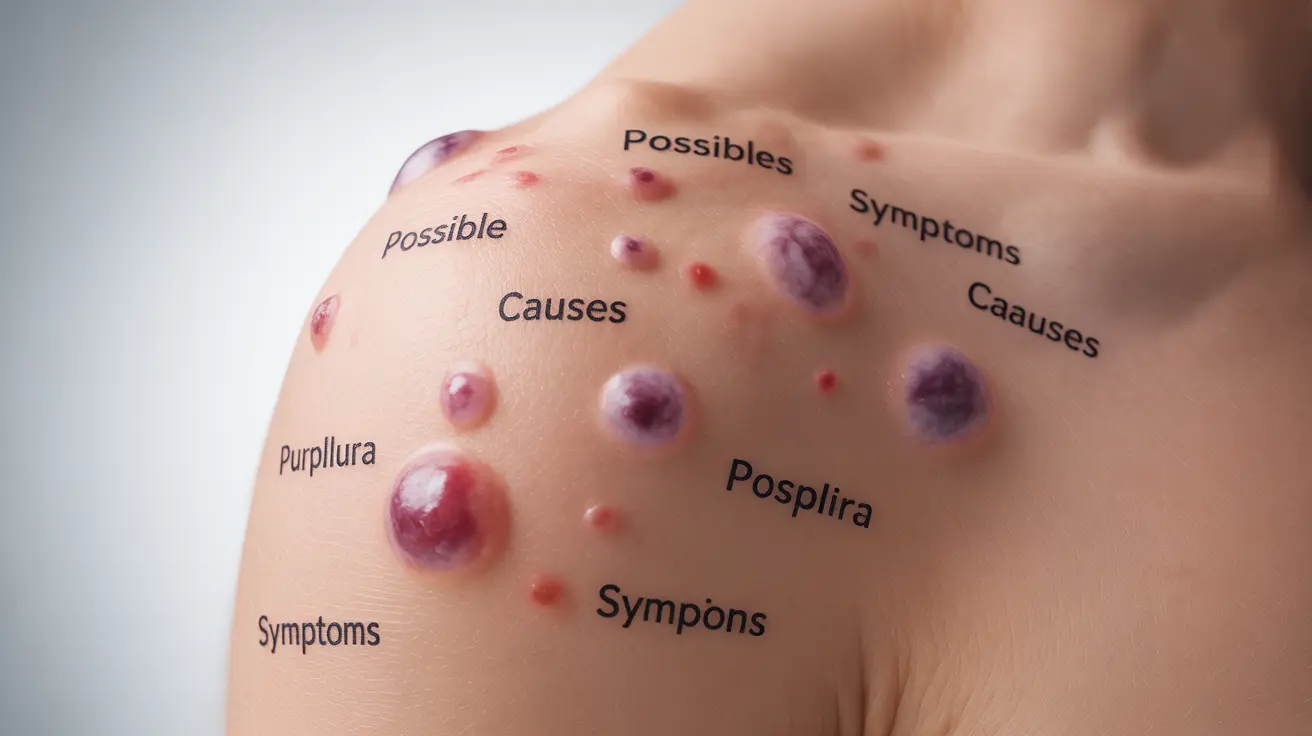Purpura is a medical condition characterized by visible purple-colored spots on the skin that occur when small blood vessels leak or burst beneath the skin's surface. These distinctive patches can range from tiny dots to larger areas and may indicate various underlying health conditions. Understanding purpura is crucial as it can sometimes signal serious medical issues requiring prompt attention.
While purpura itself isn't a disease but rather a symptom, its presence can provide important clues about a person's health status. The condition can affect people of all ages and may appear suddenly or develop gradually over time, making it essential to recognize its signs and know when to seek medical care.
Types of Purpura
Medical professionals typically classify purpura into several distinct categories based on their underlying causes and characteristics:
- Thrombocytopenic purpura (caused by low platelet counts)
- Non-thrombocytopenic purpura (normal platelet counts)
- Senile purpura (common in elderly individuals)
- Henoch-Schönlein purpura (inflammatory condition affecting blood vessels)
Signs and Symptoms
The primary sign of purpura is the appearance of purple spots on the skin, but additional symptoms may include:
- Purple or reddish-brown spots that don't blanch when pressed
- Spots ranging from small dots to large patches
- Possible joint pain or swelling
- Potential abdominal pain or gastrointestinal symptoms
- Fatigue or weakness in some cases
Common Causes and Risk Factors
Various factors can contribute to the development of purpura, including:
- Autoimmune disorders
- Blood clotting disorders
- Certain medications
- Infections
- Vitamin C deficiency
- Blood vessel inflammation
- Advanced age
Diagnostic Process
Healthcare providers typically follow a comprehensive approach to diagnose purpura and its underlying cause:
- Physical examination
- Complete blood count (CBC)
- Platelet function tests
- Coagulation studies
- Skin biopsy (in some cases)
- Additional specialized tests based on suspected causes
Treatment Approaches
Treatment for purpura varies depending on the underlying cause and severity of the condition. Common approaches include:
- Addressing underlying medical conditions
- Corticosteroids for inflammation
- Immunosuppressive medications when appropriate
- Platelet transfusions in severe cases
- Vitamin C supplementation if deficient
- Discontinuation of triggering medications
Prevention and Management
While not all cases of purpura can be prevented, certain measures may help reduce risk or manage existing conditions:
- Regular medical check-ups
- Maintaining adequate vitamin C intake
- Avoiding medications known to trigger purpura
- Protecting skin from injury
- Managing underlying health conditions effectively
Frequently Asked Questions
What causes purpura and how can I tell if it is serious?
Purpura can be caused by various factors including autoimmune conditions, blood disorders, medications, or infections. It's considered serious if accompanied by other symptoms like fever, joint pain, or bleeding elsewhere in the body, or if the spots appear suddenly and spread quickly. Any unexplained purpura should be evaluated by a healthcare provider.
What are the common symptoms of purpura that should prompt a doctor visit?
Seek medical attention if you notice purple spots that don't blanch when pressed, especially if accompanied by unexplained bleeding, severe fatigue, joint pain, or abdominal pain. Also consult a doctor if the spots appear suddenly or spread rapidly.
How is purpura diagnosed and what tests are usually done?
Diagnosis typically involves a physical examination, complete blood count, platelet function tests, and coagulation studies. Additional tests may include skin biopsies or specialized blood work depending on suspected underlying causes.
What treatment options are available for purpura depending on its cause?
Treatment varies based on the underlying cause and may include corticosteroids, immunosuppressive medications, platelet transfusions, or vitamin C supplementation. Some cases may resolve on their own, while others require ongoing management of underlying conditions.
Can purpura be prevented or managed through lifestyle changes or medications?
While not all cases can be prevented, maintaining good overall health, ensuring adequate vitamin C intake, avoiding trigger medications, and protecting skin from injury can help manage the condition. Regular medical monitoring and proper management of underlying health conditions are also important preventive measures.




